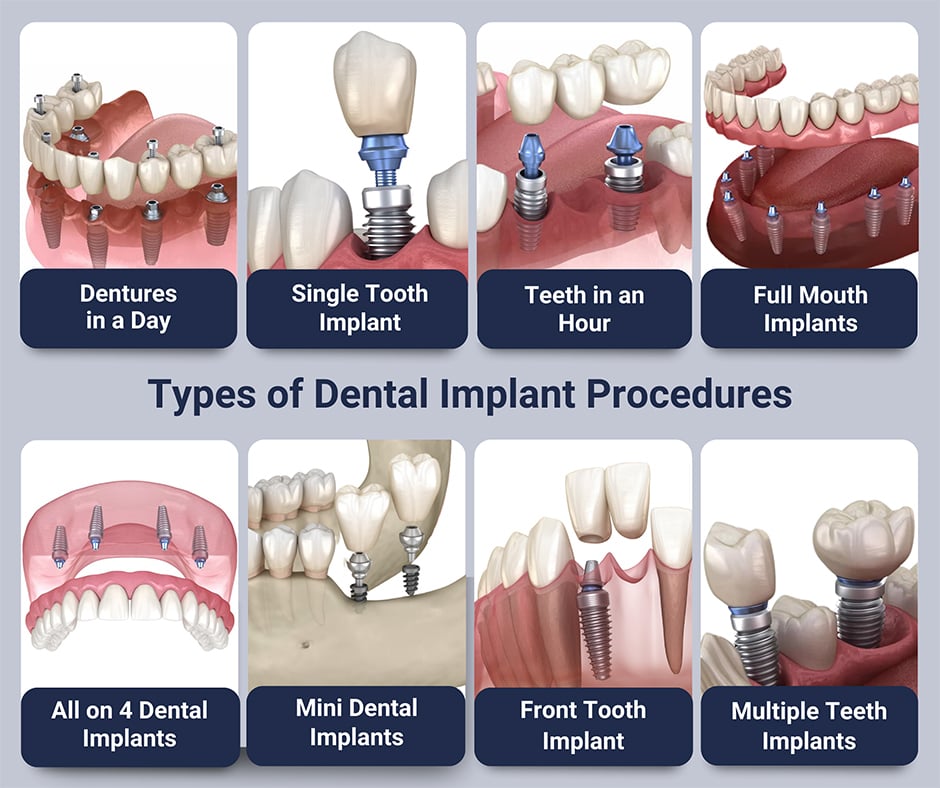The Best Strategy To Use For Dental Sense
The Best Strategy To Use For Dental Sense
Blog Article
More About Dental Sense
Table of ContentsDental Sense Fundamentals ExplainedThe Main Principles Of Dental Sense Dental Sense for BeginnersWhat Does Dental Sense Do?
are medical tools surgically implanted right into the jaw to bring back an individual's capability to chew or their look. They provide assistance for fabricated (phony) teeth, such as crowns, bridges, or dentures. When a tooth is lost as a result of injury or condition, an individual can experience problems such as rapid bone loss, defective speech, or changes to eating patterns that lead to pain.Oral implant systems contain a dental implant body and dental implant joint and might also consist of an abutment addiction screw. Kids dental. The dental implant body is surgically placed in the jawbone instead of the tooth's root. The dental implant abutment is normally connected to the dental implant body by the joint fixation screw and extends with periodontals right into the mouth to support the connected artificial teeth
(https://issuu.com/dentalsense1)Framework of The Oral Implant System selecting oral implants, talk to your oral company concerning the prospective advantages and risks, and whether you are a candidate for the procedure. Things to take into consideration: Your general health and wellness is a vital consider determining whether you are an excellent candidate for dental implants, just how long it will certainly take to recover, and the length of time the dental implant might stay in place.
Smoking might impact the recovery procedure and reduce the lasting success of the dental implant. The recovery procedure for the dental implant body may take several months or longer, throughout which time you commonly have a momentary joint in location of the tooth. the oral implant treatment: Very carefully adhere to the oral hygiene instructions offered to you by your oral provider.
What Does Dental Sense Do?
Implant failing can lead to the requirement for another operation to deal with or change the dental implant system. Brings back the ability to eat Recovers aesthetic appearance Assists maintain the jawbone from shrinking because of bone loss Protects the wellness of the surrounding bone and gum tissues Aids keep adjacent (close-by) teeth stable Improves quality of life Damage to bordering natural teeth during dental implant placement Injury to the surrounding tissues during surgical treatment, such as sinus opening Injury throughout surgery (for instance, crack of surrounding jawbone) Insufficient feature, such as seeming like the teeth do not bite with each other normally A feeling that the tooth hangs or twisting in location arising from a joint screw loosening Implant body failing (looseness of the dental implant body) as a result of systemic infection, which may be more probable in individuals with unrestrained diabetics issues due to regional infection in bone and gum tissues sustaining the implant body as a result of postponed healing, which may be most likely in people that smoke Problem cleansing the periodontals around the dental implant, resulting in bad oral health Untreated gum disease Post-surgical numbness because of nerve impingement or damages Always notify healthcare providers and imaging service technicians that you have oral implants prior to any kind of magnetic resonance imaging (MRI) or x-ray treatments.
FDA is not familiar with any type of unfavorable events reported for MRI or x-ray procedures with oral implants. Oral implants systems are typically made of materials that adhere to global agreement standards of the International Company for Standardization (ISO) or ASTM International. These criteria have details of what makes a secure product.

An oral implant is a framework that changes a missing tooth. With screw-like tools, the specialist inserts a dental implant into the jawbone, and it acts as an anchor for a fabricated tooth, called a crown.
Little Known Questions About Dental Sense.
Some individuals are not eligible for dental implant surgery. It is for oral specialists to run on individuals with: intense illnessuncontrollable metabolic diseasebone or soft tissue illness or infectionIf these problems are solved, an individual can have the surgical procedure. In, dental doctors avoid operating people with: If people with any one of the above undergo oral implant surgical treatment, there is a higher risk of the dental implant stopping working.

Dental dental implant surgical procedure is a customized procedure. It's not the very same for everyone. However the following provides a general review of what you can anticipate your dentist, oral specialist, periodontist or prosthodontist to do: Place the dental implant surgically. Provide you time to recover. Affix the message and final crown, bridge or denture.
Next, your surgeon will thoroughly place the oral implant right into your jaw. Your surgeon will certainly reposition your periodontals and shut the laceration with stitches. If your implant is near the front of your mouth, your dental professional click for info will certainly make a short-lived tooth for you to wear until you heal. By doing this, you will not have a space in your smile while you recoup.
The Facts About Dental Sense Revealed
During the recovery phase, your jawbone ought to fuse to the dental implant. This procedure can take anywhere from three to 9 months.
As soon as your implant heals, your dental expert can attach the abutment (tiny adapter message) and your final reconstruction (crown, bridge or denture). This usually takes about one hour to finish and might need a second small surgical treatment. You should not feel any kind of pain throughout your dental implant treatment due to the fact that your service provider will certainly use medication to numb your gum tissues.
Report this page